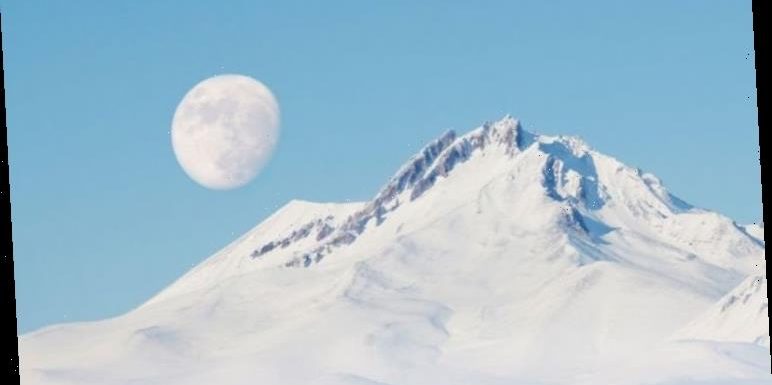
Super Snow Moon: New Yorkers capture rare event
When you subscribe we will use the information you provide to send you these newsletters.Sometimes they’ll include recommendations for other related newsletters or services we offer.Our Privacy Notice explains more about how we use your data, and your rights.You can unsubscribe at any time.
The second Full Moon of the year is traditionally known as the Snow Moon, although you might also know it as the Eagle Moon or Bear Moon. In some parts of the world, this lunar phase is also called the Storm Moon, the Hunger Moon or the Bony Moon. Express.co.uk explains everything you need to know about the Full Moon.
When is the Full Moon this month?
The Snow Moon will peak in brightness on the morning of Saturday, February 27.
To the untrained eye, the Moon will appear full for about three nights centred on this peak.
But in astronomical terms, the Full Moon will only last for a brief moment when the Sun and Moon are perfectly aligned.
According to the US space agency NASA, the Full Moon will peak at 8.17am GMT (3.17am EST).
What is the meaning behind the Snow Moon’s name?
The Moon goes through 12 or 13 full phases each year and they all have unique names.
The more popular names are said to originate in the time-keeping traditions of Native American tribes.
Tribes such as the Algonquian peoples would use the Full Moon to keep track of the seasons.
The names were then adopted by colonial Europeans and resurfaced in popular culture in the 20th century.
For instance, the Pink Moon in April is named after a type of pink flower that springs around that time of the year.
December’s Cold Moon, meanwhile, is named after the chill of winter settling in.
In February, the Snow Moon arrives in the last days of winter – astronomical spring will begin towards the end of March.
According to the Maine Farmer’s Almanac, native tribes in the northeastern US called this Full Moon the Snow Moon or the Storm Moon after heavy snow this time of the year.
DON’T MISS…
Space weather: Solar flares could be on the rise [REPORT]
UFO hunter spots ‘Tic-Tac’ anomaly over New York in archive video [INSIGHT]
Black hole map: Astronomers create detailed map of black holes [STUDY]
Supermoon: Stunning moment full moon sets in Colorado
Amy Nieskens of the Old Farmer’s Almanac said: “February’s Full Moon is called the Full Snow Moon because typically the heaviest snows fall in February.
“In the old days, the abundant snow made it difficult to hunt and trap, so often times Native Americans would refer to this Moon as the Hunger Moon.”
There are, of course, many other names for this Moon in North America alone.
In some parts of the world, this is the Magha Purnima – the last day of the month of Magha in the Hindu and Buddhist calendar.
The Full Moon will also arrive on the day after the Chinese Lantern Festival, the traditional end of Chinese New Year celebrations.
When are the Full Moons in 2021 and what are their names?
Here is a list of the Full Moons and their names in the new year:
Wolf Moon – January 28
Snow Moon – February 27
Worm Moon – March 28
Pink Moon – April 27
Flower Moon – May 26
Strawberry Moon – June 24
Buck Moon – July 31
Sturgeon Moon – August 30
Harvest Moon – September 29
Hunter’s Moon – October 28
Beaver Moon – November 27
Cold Moon – December 27
Source: Read Full Article



